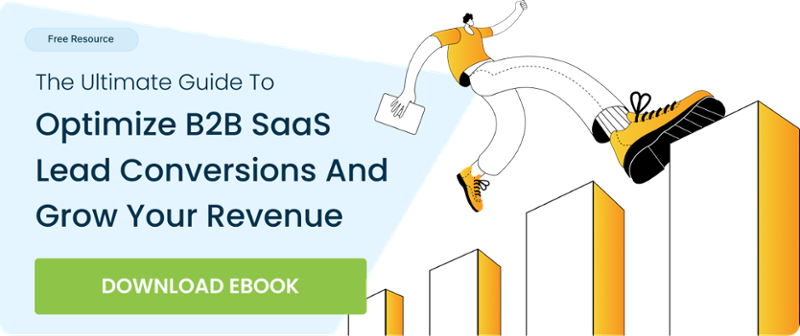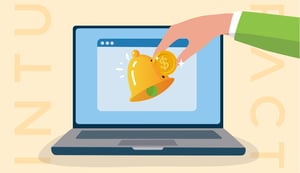Your SaaS pricing tells the story of your value, and should communicate that value in a way that actually attracts customers.. Every SaaS founder worries if their pricing is right, and with good reason. Your SaaS pricing should justify your product and yet be affordable.
But is it that simple?
There are many things that can make or break your SaaS business, but pricing is easily one of the most important ones.
In this article, we will explore different SaaS pricing models along with their pros and cons so that you can make an informed decision.
Setting the Context for SaaS Pricing
Before overwhelming yourself with various models to price your SaaS product, ground yourself with a thorough analysis based on these variables.
That means working out:
- where will you position yourself in the market
- what kind of customers do you want to attract
- how many customers do you want to serve with your SaaS
- what benefits will they get at different levels of service
- how long your customer lifespan will be
- whether you are serving businesses, direct customers or both
Thinking about these points will enable you to know the value of your SaaS and will make it easier to think about pricing tiers and bundles. Many companies find that they have to revisit these over time and change their strategies to match the needs of the market.
Now, here are some of the main SaaS pricing models companies use, along with some of the advantages and disadvantages of each.
1. Per User Pricing
Per-user pricing is a common SaaS pricing model, where you pay different amounts depending on the numbers of people using the service. It's similar to the model used by many companies for physical software licensing, but it's not perfect.
Patrick Campbell of Price Intelligently says that SaaS companies can actually hurt their business with this pricing model, especially if you're working with companies where there may be multiple users. It means you cut down on the number of people within a company who can get to know and love your software. The model also limits the potential number of active users, which is bad news for the health of your SaaS company. Yes, sometimes, per user pricing works, but in most cases, a value-based approach is better.
Example:
2. Tiered User Pricing
Related to this is the strategy of tiered user pricing, where the numbers of permitted users increase in bands rather than single digits. For example, a given SaaS company might be one price for up to 5 users, another for up to 10 and so on. This has some of the same disadvantages as regular per-user pricing and doesn't represent value for people like solopreneurs who may need additional features but not additional users. If you're offering tiers, think about the number of options and how you display them as this could affect revenue.
Example:
3. Per Storage Pricing
Cloud storage companies often use tiered pricing based on the amount of storage people need. For example, Google allows you 15GB of storage across your account, then you have to pay for anything extra. And companies like Dropbox let you have a certain amount of storage free, then you have to pay. This allows people to get to know a service, which may encourage them to upgrade when they hit the limit. It certainly worked for me with Dropbox!
Example:
4. Feature Based Pricing
Another common SaaS pricing model is to differentiate prices in tiers based on the services and upgrades available to customers. For example, if you're running an invoicing company, your customers will probably be focused either on the number of customers they can manage or the number of invoices they can send. Working out which is most important will help you decide how to stack your pricing tiers. (FYI, I spent years looking for the perfect online invoicing company and bypassed a lot of popular options because the features they thought were important didn't match my needs.)
Example:
5. Pay as You Go
As Apprenda explains, the pay as you go SaaS pricing model charges customers based on their usage of the service. An example is Amazon Cloud Server's pricing. The disadvantage for customers is the impossibility of knowing for sure what their resource usage will be, which makes it difficult to calculate their likely costs. However, this can work very well for customers with fluctuating service usage.
Example:
6. Roll Your Own
One way to appeal to your customers is to let them customize their service package. That's one option offered by Hiveage, which lets you pick the add-ons you want. There's a fee for this pro service, but then you get your own bundle. The company says this virtual "sushi train" works very well for small businesses.
Example:
7. Freemium
Another approach is to provide awesome functionality for free, then have a range of upgrades. For example, you can get a lot out of LinkedIn with the free version, but there are several upgrade packages tailored to the specific needs of job seekers, recruiters, business owners and salespeople.
This works well if your add-on services have real value for your target audience, but there's always a danger that most people won't need - or want - to upgrade, as Hubstaff found out. They ended up with a lot of free users who were using a lot of their support resources. As a result Hubstaff reduced the services available on the free plan.
Example:
8. Flat Rate Pricing/Subscription
When you move beyond free, some companies charge a flat rate for all their upgraded services, with no further differentiation. That's what Buffer has done with its Awesome plan. However, the company has also introduced Business and Agency plans with tiered pricing. This is a simple option for customers and makes it easy for SaaS companies to be sure of the revenue they'll be getting.
Example:
9. Free, Ad Supported
Another pricing option is to make your core product free, but earn revenue from giving access to your audience. Wave Accounting doesn't charge for its small business accounting software, but it runs sidebar ads for related products and deals in the customer dashboard. Use this for your SaaS and you could make money while earning the love of your customers.
Another company that has successfully implemented a freemium ad supported tier is Wix. When you sign up you are automatically enrolled in the free plan and can upgrade to any premium plan, which takes ads away and unlocks more features.
Example:
10. Pay Per Active User
Slack has been making waves with a pricing model based on the number of active users in an organization. This addresses some of the issues of the first SaaS pricing strategy listed in this roundup. Slack includes a free plan, plus a few tiers, but the unusual feature is that while companies commit to a tier, Slack will refund them if they have fewer users than they thought. Jake Dunlap predicts that this innovation could change SaaS pricing in the future. What do you think?
Example:
Bonus Section
11. Penetrative Pricing
Penetrative pricing targets to capture the market with its highly competitive pricing. You can introduce your service at a much lower price than the competitors in the initial days to attract customers. Once you have acquired a good chunk of the market, you can gradually increase the price to make a profit.
Netflix is a perfect example of this pricing model where they boosted their subscription price over the few years.
Though it can help you dominate the market quickly, initial low prices can hurt your revenue. And there is a risk of significant user churn once the price is increased.
12. Price Skimming
This model suggests setting a high price in the initial few months and then decreasing it once the product is familiarized in the market. It’s done to attract early adopters who are willing to pay even a high cost to use the product features. But once a few more competitors pop up, you can reduce the pricing.
It’s a good strategy to get substantial returns on your investment and let early adopters test your product. You can then incorporate their feedback to improve the product.
However, there is always a risk that your long-term customers might feel cheated seeing the price reduction later.
Salesforce sets a high-price plan for their enterprise clients to generate more revenue quickly and tweaks the product features.
13. Captive Pricing
The main product is accompanied by an additional accessory or service, which is called a captive product. This captive service is priced more than the main product because it adds real value to the combination. It serves two benefits, the lower price of the core product attracts customers and you can upsell the captive product to them for additional revenue.
For example- You can offer 24/7 support to the enterprise clients at some extra cost to the plan. Prompt service is non-negotiable for enterprises as their revenue gets affected if any issue or delay occurs.
14. Psychological Pricing Tactic
It’s easier to trick a human brain than you think.
Psychological pricing tactics aim to exploit those weak links in our brain wiring, making customers spend more.
Price Appearance- It makes a significant impression on a buyer with how you choose to price your product. The same products priced at $3.99 and $4 will see different purchases, with the former taking the lead.
BOGO Deals- “Buy one, get one” sounds like every customer's dream. People engage more with such deals rather than percentage discounts.
Create Urgency- No one wants to miss a good deal. That’s why limited-time offers give such good returns. You can leverage festive offers or flash deals to push the customers to buy quickly.
Conclusion
You can’t choose the perfect pricing model at the drop of your hat. And you don’t even have to.
Pricing models aren’t set in stone. You can change it if, even after a long period of time, you are not getting the expected results.
But since switching the pricing model might create confusion among the existing customer base, it’s advisable to research well and implement strongly. Spend considerable time on finding what your ideal customers want and how your competitors are striving to meet those demands.
You can even mix and match these pricing models to squeeze the maximum juice out of your investments. For more information on how to optimize set the right pricing strategies to grow your revenue, check out this guide on optimizing B2B SaaS lead conversion.
Frequently Asked Questions
1) What are the most common SaaS pricing models?
The most common SaaS pricing models are:
- Per-user Pricing
- Tiered User Pricing
- Per Storage Pricing
- Feature Based Pricing
- Pay as You Go
- Custom Pricing
- Freemium
- Flat Rate Pricing
- Free, Ad-Supported
- Pay Per Active User
- Penetrative Pricing
- Price Skimming
- Captive Pricing
2) What are the most effective SaaS pricing strategies?
The most effective SaaS pricing strategies are:
- Conduct customer surveys to understand their expectations
- Research competitors to see what they are providing
- Analyze the customer lifetime value you expect
- Decide how you want your product to be viewed in the market
3) What is the role of psychological pricing tactics when it comes to SaaS pricing?
Psychological pricing tactics work on the basic principle that the human mind is lazy. It might miss out on logic if something makes sense superficially. It can help you convince customers to spend more without providing heavy discounts.


